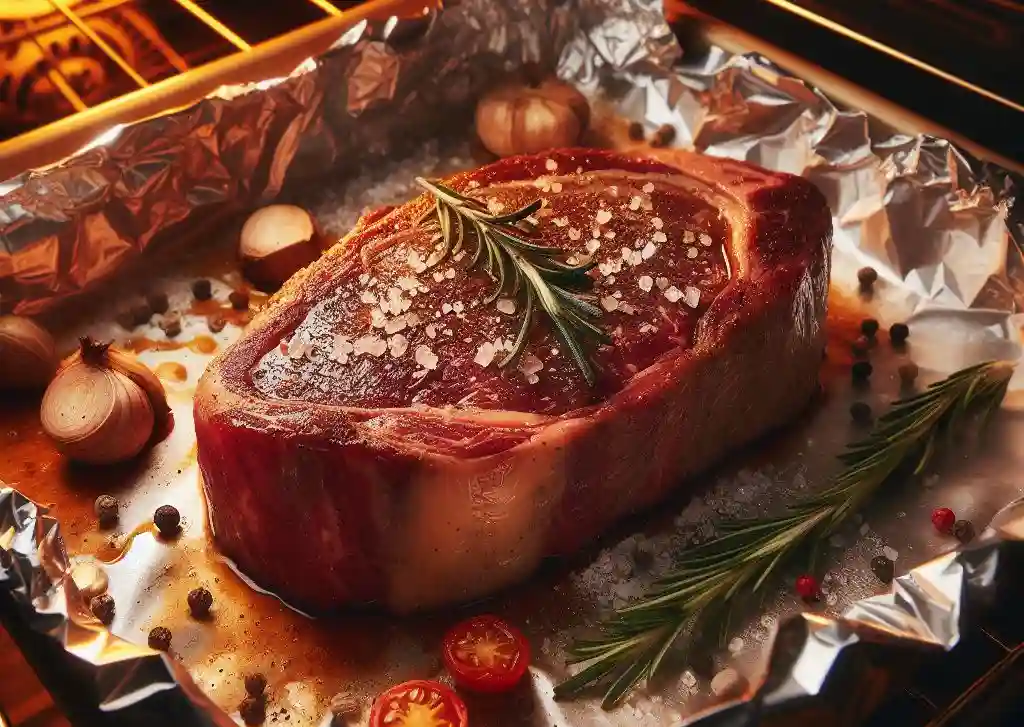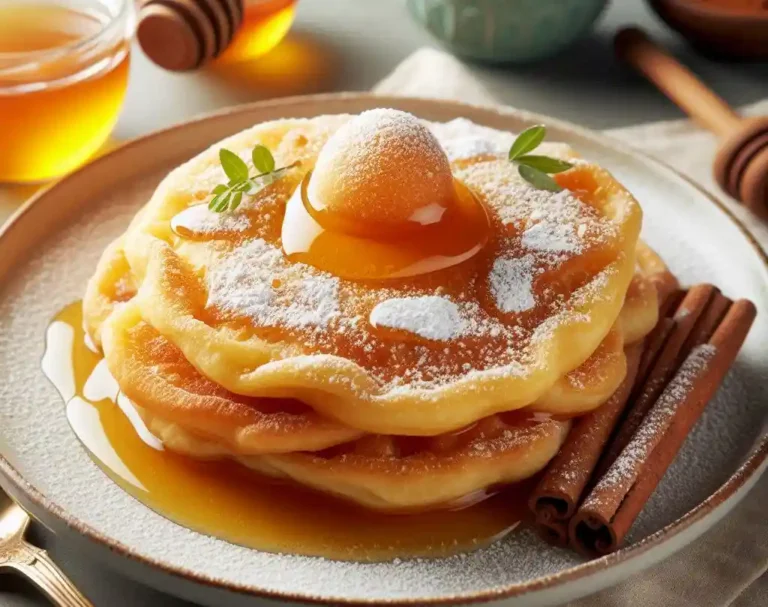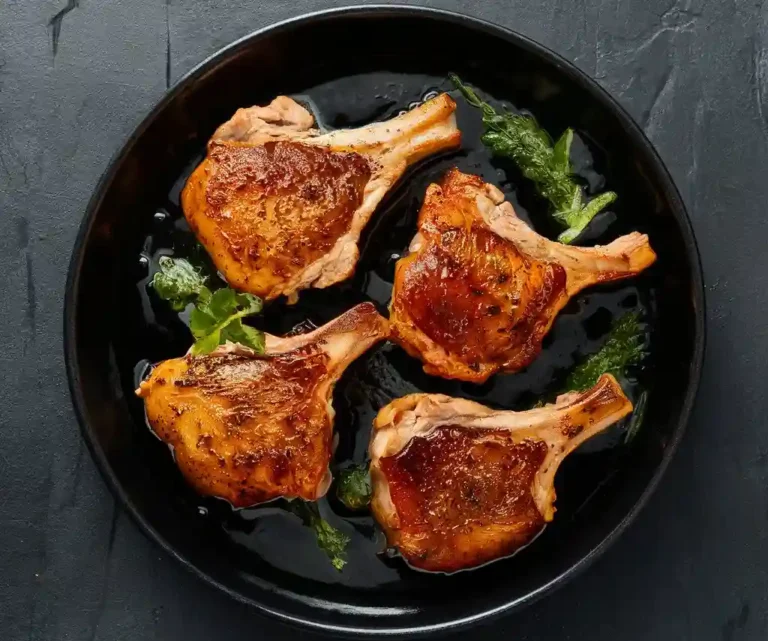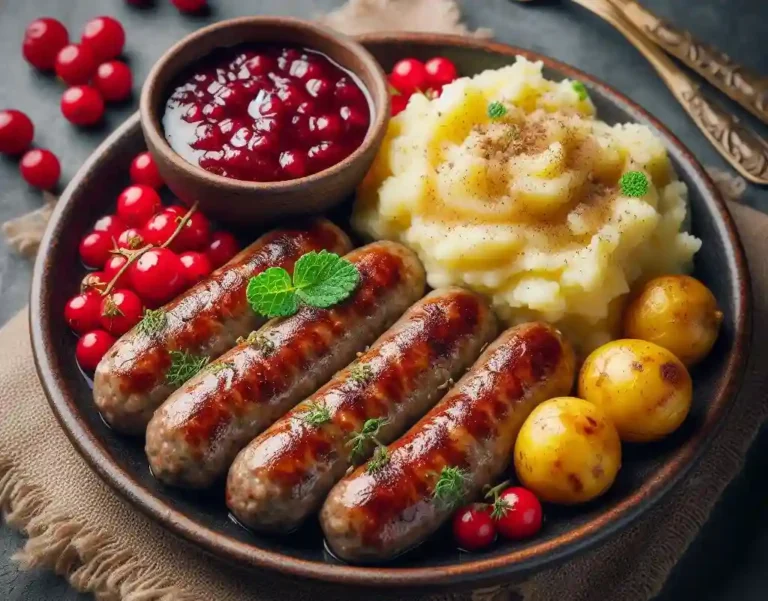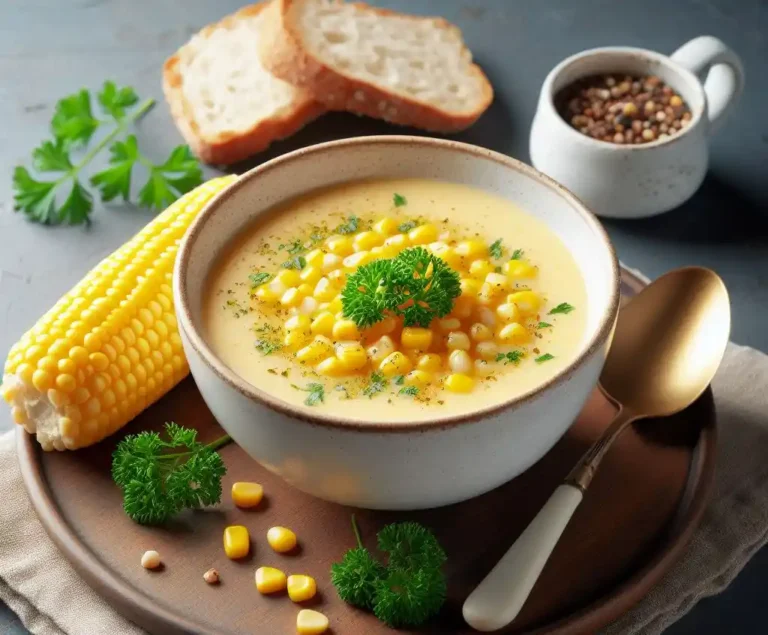How to Cook Steak in the Oven with Foil? – Quick and Easy
Cooking steak in the oven is a great way to achieve a perfectly cooked piece of meat without having to fire up the grill.
In this blog post, we will discuss the step-by-step process of how to cook steak in the oven using foil.
This method is quick, easy, and results in a juicy and flavorful steak that will impress your family and friends. So let’s get started on mastering the art of cooking steak in the oven.
How to Cook Steak in the Oven with Foil? – A Quick Overview
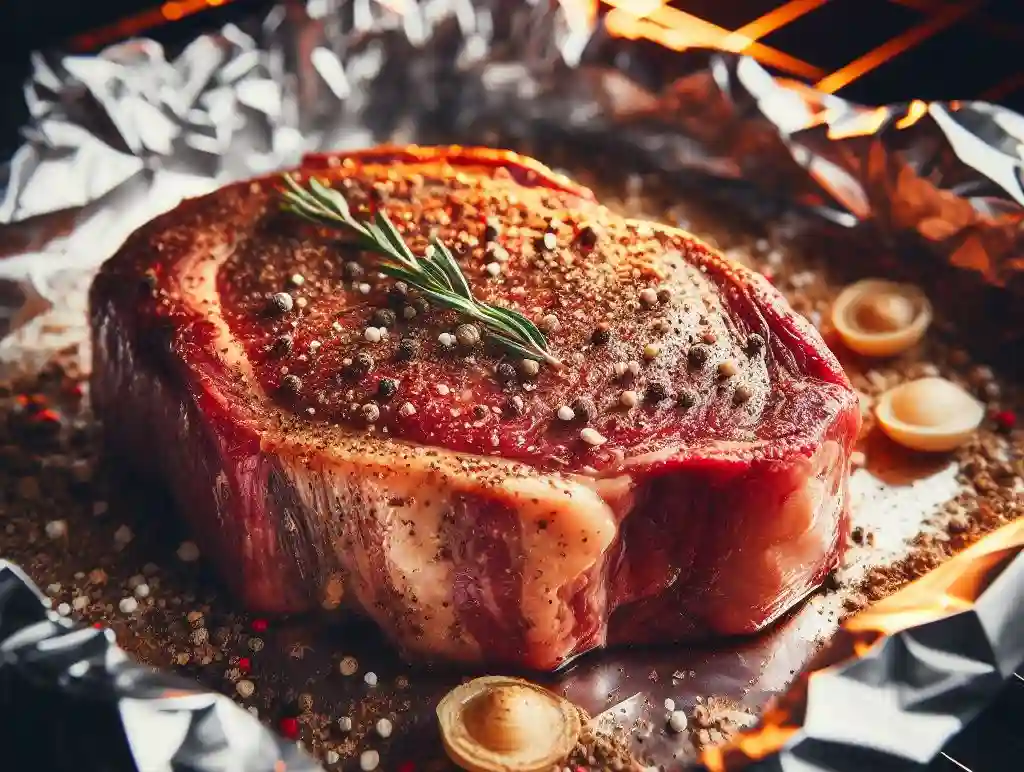
- Preheat your oven to 400°F to ensure it’s ready for your steak.
- Let your steak reach room temperature, about 30 minutes outside the fridge, to ensure even cooking.
- Season your steak generously on both sides with salt, pepper, and any other desired herbs or spices to infuse flavor.
- Place the steak in the center of a large piece of aluminum foil. Add additional flavor enhancers if preferred, such as slices of butter, minced garlic, or a sprig of rosemary.
- Wrap the steak securely in the foil by bringing the sides up and over the steak, then folding the edges to seal tightly. This traps moisture and flavor inside, creating a delicious self-basting environment.
- Place the foil-wrapped steak on a baking sheet or directly on the oven rack and cook in the preheated oven. Cooking times will vary based on the thickness of your steak and desired level of doneness, generally ranging from 10 to 15 minutes for a medium-rare finish in a 1-inch thick steak.
- Use a meat thermometer to check the steak’s internal temperature to ensure it reaches your preferred level of doneness, adjusting the oven time as necessary.
- After removing the steak from the oven, let it rest while still wrapped in the foil on a cutting board for 5 to 10 minutes. This allows the juices to redistribute throughout the meat, ensuring a juicy result.
- For a perfect finish, consider searing the steak on high heat in a skillet for 1-2 minutes per side to create a delectable crust.
- Carefully unwrap the steak, slice against the grain, and serve immediately with your choice of sides for a perfectly cooked, flavorful steak right from your oven.
Why Choose the Oven for Your Steak?
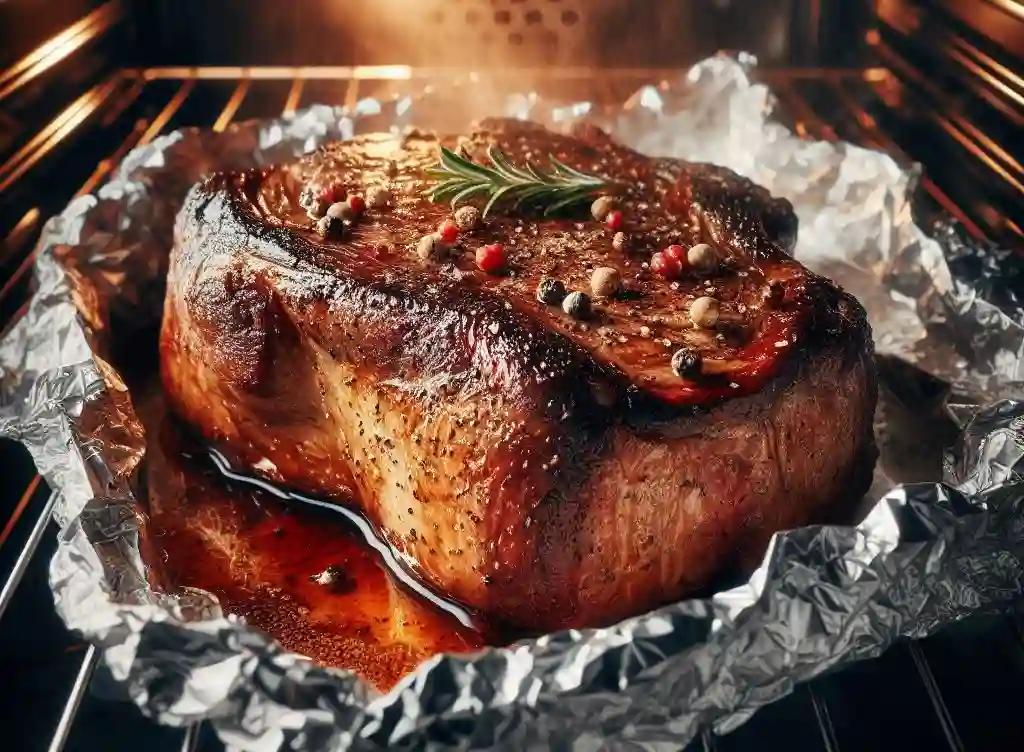
Opting to cook your steak in the oven offers several key benefits. The oven’s encompassing heat ensures that your steak cooks more uniformly than it might on a grill or stove, contributing to a consistently juicy and tender outcome.
This method shines particularly when outdoor grilling isn’t an option due to weather constraints, providing an excellent indoor alternative. Moreover, the precise temperature control available with oven cooking guarantees your steak reaches the exact level of doneness you prefer, eliminating the guesswork often associated with other cooking methods.
This technique not only simplifies the cooking process but also enhances the overall dining experience by delivering a perfectly cooked steak every time.
Selecting the Right Cut of Steak
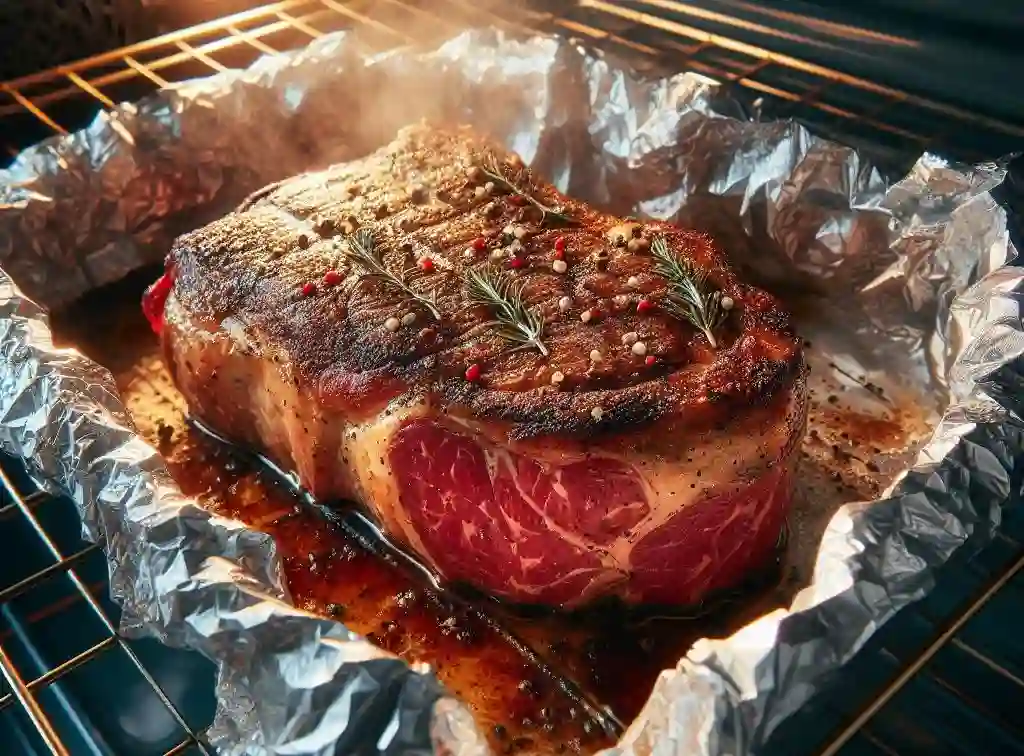
The success of your oven-cooked steak begins with selecting an appropriate cut. For optimal results, focus on cuts with good marbling, such as ribeye or New York strip. These choices are inherently more tender and flavorful, well-suited for the even, encompassing heat of oven cooking.
Marbling—the white flecks of fat within the meat—plays a crucial role in enhancing both flavor and texture as it melts during cooking. On the other hand, leaner cuts, notably sirloin, are less ideal for this method as they tend to dry out and toughen with the prolonged heat exposure.
Thus, for a succulent and delectable oven-cooked steak, prioritizing well-marbled cuts will set the foundation for a delightful culinary experience.
Preparing Your Steak for the Oven
To ensure your Steak in the Oven cooks evenly in the oven, start by letting it reach room temperature, which usually takes about 30 minutes. This critical step is often overlooked but is essential for achieving uniform cooking throughout the steak.
During this time, preheat your oven to the desired temperature, which is typically around 400°F for most steak recipes. This preparation phase is also the perfect opportunity to gather any seasonings or additional ingredients, such as herbs, garlic, or butter, that you plan to use for enhancing the flavor of your steak.
By handling these steps before the steak enters the oven, you set the stage for a cooking process that promises a deliciously juicy and flavorful outcome.
Wrapping Your Steak in Foil Properly
To ensure your steak remains juicy and packed with flavor during the oven cooking process, proper foil wrapping is crucial. Begin by placing your seasoned steak at the center of a sizable piece of aluminum foil.
Gently but firmly bring the sides of the foil up and around the steak, ensuring you leave no gaps. This technique traps the steak’s natural moisture and any added seasonings, herbs, or butter you’ve included, creating a self-basting environment that deeply infuses the meat with flavor.
Make sure to press the edges of the foil together to form a tight seal, preventing any steam from escaping. This method not only cooks the steak to perfection but also makes cleanup a breeze, as all the juices and seasonings remain contained within the foil packet.
Seasoning Your Steak to Perfection
The key to unlocking the full flavor potential of your steak lies in the seasoning. Before you encase your meat in foil, liberally apply salt and pepper, ensuring an even coverage that will amplify the steak’s natural flavors.
Don’t hesitate to incorporate your favorite herbs and spices into the mix—rosemary, thyme, and garlic powder are excellent choices that complement the rich taste of steak. For those looking to add an extra dimension of flavor, a dab of butter or a drizzle of olive oil can work wonders.
These additional elements not only season the steak but also contribute to creating a succulent, aromatic cooking environment within the foil. Remember, the spices and herbs you choose should harmonize with the steak’s inherent flavors, creating a memorable culinary experience with every bite.
Checking for Doneness
Ensuring your steak reaches the perfect level of doneness is critical for the ideal culinary experience. Utilizing a meat thermometer is the most reliable method to accurately gauge the steak’s internal temperature.
Target temperatures for varying degrees of doneness are as follows: aim for 120-125°F for a rare steak, 130-135°F for a steak that’s medium-rare, 140-145°F for medium, and anything above 160°F for a well-done steak.
Keep in mind that the steak will continue to cook after it’s removed from the oven due to residual heat, so it’s wise to pull it out a few degrees before it hits your target temperature. This practice ensures your steak doesn’t overshoot your preferred level of doneness by the time it’s ready to serve.
Searing the Steak for a Perfect Finish
To add an exquisite crust and enhance the steak’s flavor profile, searing it post-oven is an essential step. Heat a skillet on high until it’s very hot, which will help achieve that desired caramelization and texture on the exterior of the steak.
Place the steak in the skillet, letting it sizzle and sear undisturbed for 1-2 minutes per side. This brief, intense heat creates a delightful contrast in texture between the steak’s crispy outside and tender inside.
Remember, this process should be swift to avoid overcooking while still imparting a rich, golden crust that’s visually appealing and packed with taste. This searing technique not only elevates the steak’s appearance but also locks in those succulent flavors, ensuring each bite is as memorable as the last.
Checking the Temperature of Your Steak
When you’re nearing the end of the cooking process, it’s essential to verify the internal temperature of your steak to ensure it’s cooked to your liking. Use a meat thermometer, inserting it into the thickest part of the steak for an accurate reading.
If the temperature hasn’t reached your preferred doneness, you can place the steak back in the oven for a few additional minutes. Keep a close eye on this step; precision is key to achieving the perfect level of doneness without overcooking.
Remember, the goal is to serve a steak that matches your exact taste preferences, making the meat thermometer an invaluable tool in this endeavor.
Oven Temperature and Cooking Times
Determining the appropriate oven temperature and cooking duration is pivotal for achieving the perfect steak. Generally, an oven preheated to 400°F is ideal for most steak types, providing a balance between a quick cook and allowing the meat to reach a succulent level of doneness.
For a steak that’s about 1 inch in thickness, a cooking time ranging from 10 to 15 minutes should suffice if you’re aiming for a medium-rare finish, which corresponds to an internal temperature of 130-135°F. It’s essential to adjust cooking times based on the thickness of your steak, with thicker cuts requiring additional time in the oven to cook properly.
Utilizing a meat thermometer to check the steak’s internal temperature during cooking will help you tailor the oven time to meet your desired doneness accurately. This approach ensures that, regardless of the steak’s size or your preferred level of doneness, you can achieve a perfectly cooked result every time.
Remember, factors such as the steak’s initial temperature and individual oven characteristics can affect cooking times, so it’s beneficial to start checking the steak a few minutes before the estimated time is up. This methodical monitoring allows you to pull your steak out at just the right moment, ensuring it’s cooked exactly to your liking without the risk of overcooking.
Resting and Serving Your Oven-Cooked Steak
Allowing your steak to rest post-oven is a crucial final step that shouldn’t be overlooked. Once removed from the oven, place your steak, still wrapped in foil, on a cutting board to rest for about 5 to 10 minutes.
This pause in the cooking process gives the steak’s fibers time to relax and reabsorb the juices that have been driven to its center during the heat exposure, ensuring that each slice is as moist and flavorful as possible. Skipping this step might result in a less juicy steak, as cutting into it too soon can cause those delicious juices to run out.
When it’s time to serve, unwrap the steak from the foil, taking care not to lose any of the accumulated juices that can be drizzled over the meat for added flavor. Slice against the grain, which means cutting perpendicular to the muscle fibers. This technique makes the steak more tender and easier to chew. Serve these succulent slices on a warm plate to maintain the steak’s ideal temperature.
Pair your perfectly cooked steak with sides that complement its rich flavors, such as roasted vegetables, mashed potatoes, or a simple green salad. This thoughtful preparation and presentation will elevate the dining experience, allowing you and your guests to fully enjoy the fruits of your culinary efforts.
FAQs
Can I cook any type of steak using this oven method with foil?
While most steak cuts can be cooked in the oven using foil, cuts with higher fat content and marbling, like ribeye or New York strip, are particularly well-suited due to their tenderness and flavor profile. Leaner cuts can also be used, but may not be as juicy.
How long does it take to cook a steak in the oven with foil?
Cooking times vary depending on the thickness of the steak and your desired level of doneness. As a general rule, a 1-inch thick steak cooked at 400°F may take 10-15 minutes for medium-rare. Always use a meat thermometer to ensure accuracy.
Do I need to sear my steak before or after oven cooking?
Searing the steak after it has been cooked in the oven adds a delicious crust and enhances flavor. Sear on high heat for 1-2 minutes per side to avoid overcooking.
Can I add vegetables or other sides to cook in the foil with the steak?
While cooking vegetables or sides in the same foil packet as your steak is possible, it’s important to consider their cooking times. Some may require less or more time than the steak, so adjusting accordingly is key.

Amelia Winthrop is the creative force behind Skillful Cooking, a blog that serves as a canvas for her culinary creations. With a philosophy that cooking should be accessible and enjoyable, Amelia crafts recipes that blend simplicity with sophistication. Her intuitive approach to the kitchen encourages others to embrace the joy of cooking and the pleasure of sharing meals with loved ones.

